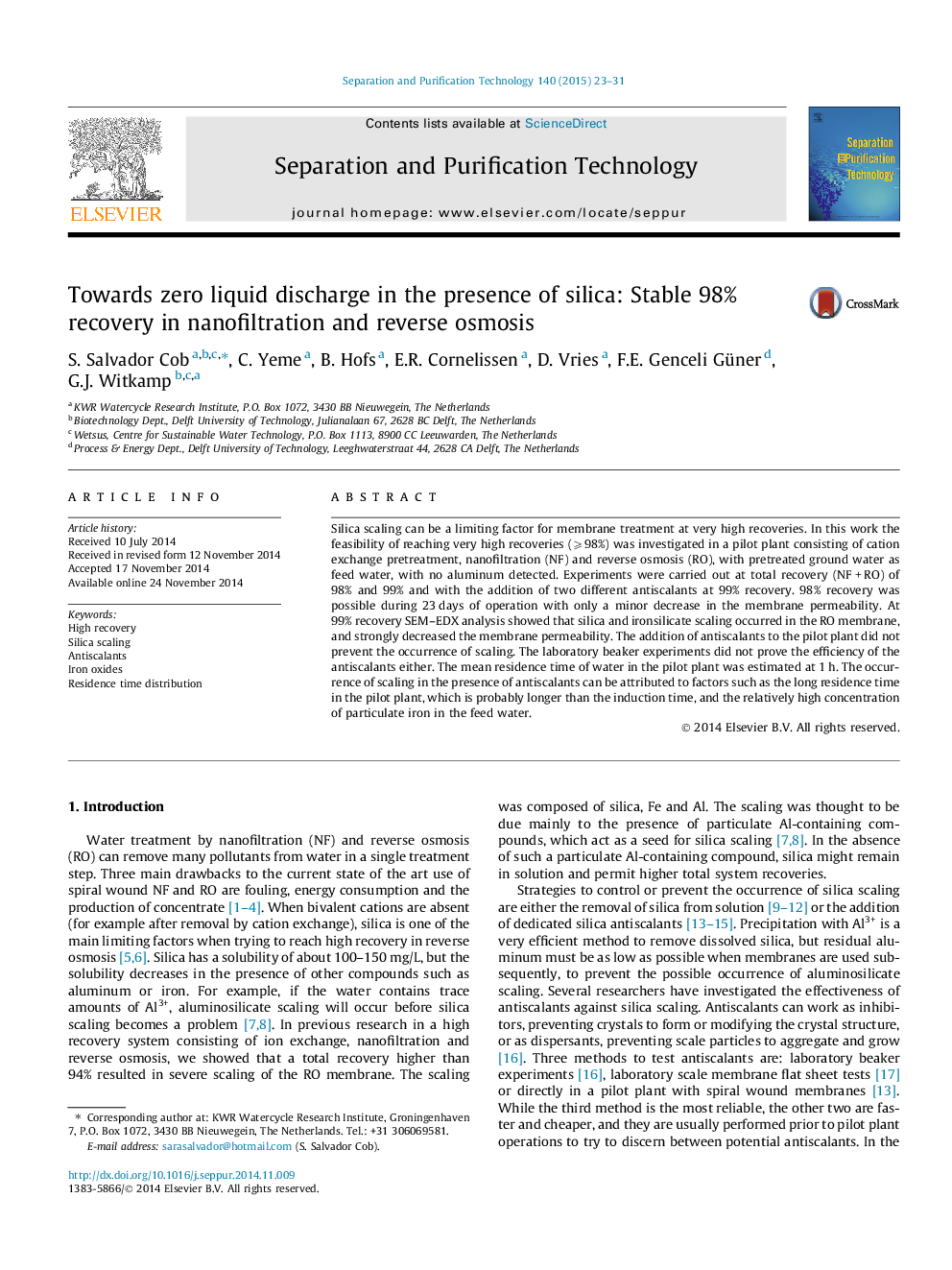| Article ID | Journal | Published Year | Pages | File Type |
|---|---|---|---|---|
| 640776 | Separation and Purification Technology | 2015 | 9 Pages |
•Stable 98% recovery was achieved in a high-recovery system.•The absence of aluminum in the feed water allowed such a high recovery.•Silica and ironsilicate scaling occurred in the RO membrane at 99% recovery.•The antiscalants tested could not prevent the occurrence of scaling.
Silica scaling can be a limiting factor for membrane treatment at very high recoveries. In this work the feasibility of reaching very high recoveries (⩾98%) was investigated in a pilot plant consisting of cation exchange pretreatment, nanofiltration (NF) and reverse osmosis (RO), with pretreated ground water as feed water, with no aluminum detected. Experiments were carried out at total recovery (NF + RO) of 98% and 99% and with the addition of two different antiscalants at 99% recovery. 98% recovery was possible during 23 days of operation with only a minor decrease in the membrane permeability. At 99% recovery SEM–EDX analysis showed that silica and ironsilicate scaling occurred in the RO membrane, and strongly decreased the membrane permeability. The addition of antiscalants to the pilot plant did not prevent the occurrence of scaling. The laboratory beaker experiments did not prove the efficiency of the antiscalants either. The mean residence time of water in the pilot plant was estimated at 1 h. The occurrence of scaling in the presence of antiscalants can be attributed to factors such as the long residence time in the pilot plant, which is probably longer than the induction time, and the relatively high concentration of particulate iron in the feed water.
